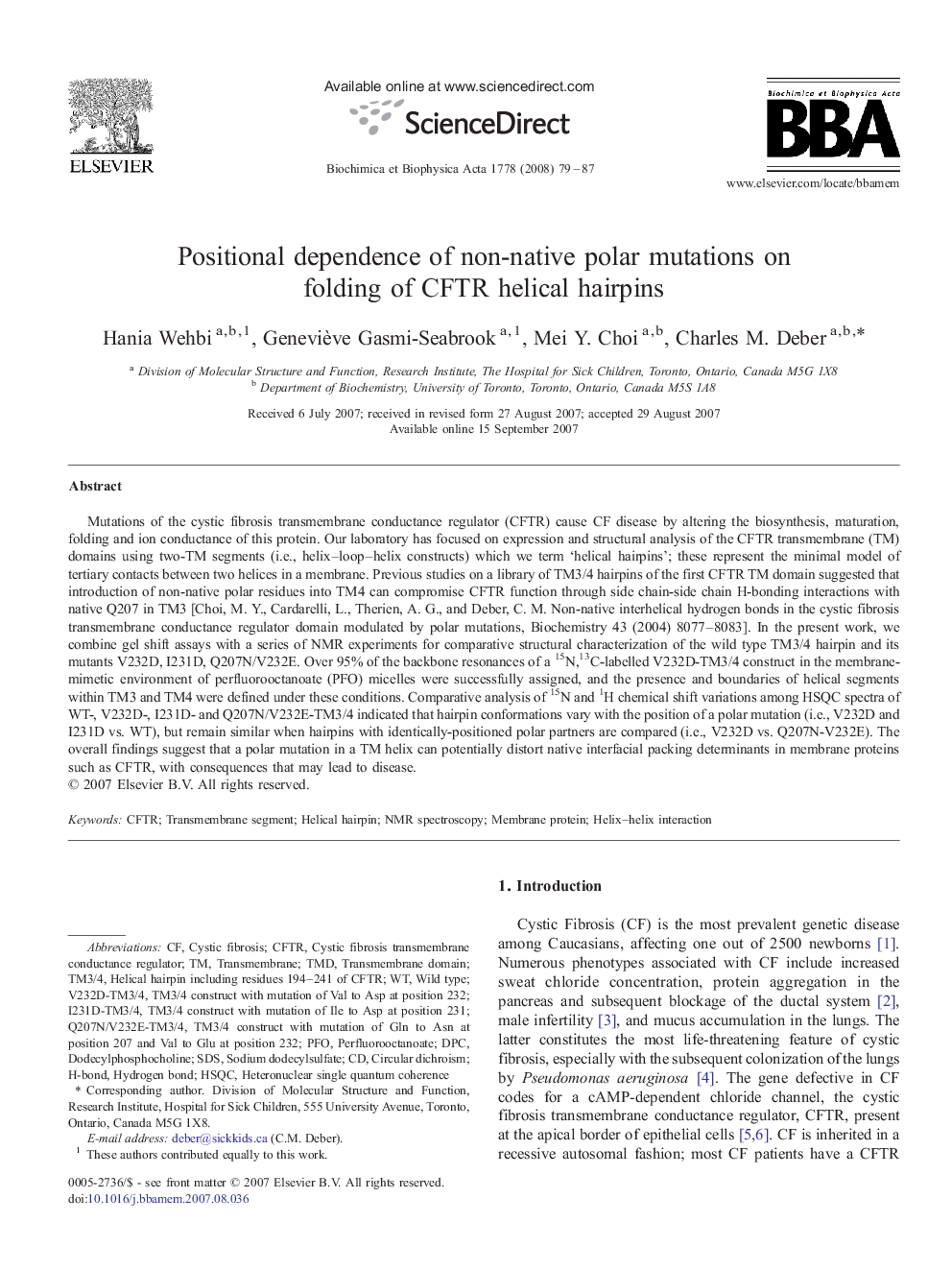| کد مقاله | کد نشریه | سال انتشار | مقاله انگلیسی | نسخه تمام متن |
|---|---|---|---|---|
| 1945547 | 1053268 | 2008 | 9 صفحه PDF | دانلود رایگان |

Mutations of the cystic fibrosis transmembrane conductance regulator (CFTR) cause CF disease by altering the biosynthesis, maturation, folding and ion conductance of this protein. Our laboratory has focused on expression and structural analysis of the CFTR transmembrane (TM) domains using two-TM segments (i.e., helix–loop–helix constructs) which we term ‘helical hairpins’; these represent the minimal model of tertiary contacts between two helices in a membrane. Previous studies on a library of TM3/4 hairpins of the first CFTR TM domain suggested that introduction of non-native polar residues into TM4 can compromise CFTR function through side chain-side chain H-bonding interactions with native Q207 in TM3 [Choi, M. Y., Cardarelli, L., Therien, A. G., and Deber, C. M. Non-native interhelical hydrogen bonds in the cystic fibrosis transmembrane conductance regulator domain modulated by polar mutations, Biochemistry 43 (2004) 8077–8083]. In the present work, we combine gel shift assays with a series of NMR experiments for comparative structural characterization of the wild type TM3/4 hairpin and its mutants V232D, I231D, Q207N/V232E. Over 95% of the backbone resonances of a 15N,13C-labelled V232D-TM3/4 construct in the membrane-mimetic environment of perfluorooctanoate (PFO) micelles were successfully assigned, and the presence and boundaries of helical segments within TM3 and TM4 were defined under these conditions. Comparative analysis of 15N and 1H chemical shift variations among HSQC spectra of WT-, V232D-, I231D- and Q207N/V232E-TM3/4 indicated that hairpin conformations vary with the position of a polar mutation (i.e., V232D and I231D vs. WT), but remain similar when hairpins with identically-positioned polar partners are compared (i.e., V232D vs. Q207N-V232E). The overall findings suggest that a polar mutation in a TM helix can potentially distort native interfacial packing determinants in membrane proteins such as CFTR, with consequences that may lead to disease.
Journal: Biochimica et Biophysica Acta (BBA) - Biomembranes - Volume 1778, Issue 1, January 2008, Pages 79–87